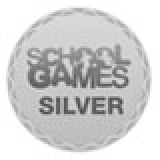Design & Technology
Subject Leader: Miss Slater
Design Technology (DT) at Airedale Junior School is intended to develop our children into confident creative designers, who are able to participate confidently in an ever-changing technological society. We aim to provide a high-quality DT education, which will engage, inspire and challenge pupils, equipping them with the knowledge and skills to experiment, invent and create their own products.
The Primary Objectives of teaching Design Technology at Airedale Junior School are:
- To develop the creative, technical and practical expertise needed to perform everyday tasks confidently in order participate successfully in an increasingly technological world
- To apply their growing knowledge, understanding and skills in order to design and make high-quality products
- To make products that are fit for purpose and that are aesthetically pleasing
- To evaluate and test their ideas and products and the work of others
- To discuss how their products could be adapted following their evaluations
- To understand the importance of healthy eating and how recipes can
- To give our children the opportunity to explore their own creativity and individuality through their designs
The Airedale D.T. Curriculum
Our curriculum is skills and knowledge based, including full coverage of the National Curriculum which meets the needs of all Airedale Infants and Junior pupils. This takes into consideration the school setting, local, national and international developments.
Our pupils are offered a very wide range of experiences within the curriculum to extend their understanding of themselves and the world in which they live. The children develop skills, attitudes, and values to enable them to become lifelong learners and equip them for the future. The ability to learn is underpinned by the teaching of basic skills, concepts, and values. There should be no limits to curiosity, and we instil a thirst for new experiences and knowledge.
We actively promote British Values and Social, Moral, Spiritual and Cultural differences. We also provide opportunities for our pupils to learn about the contribution of Britons to innovation, excellence and changes in the world.
The Curriculum has been organised into topics which are a vehicle to promote our school values and curriculum drivers, and allow for the development of skills and understanding within and across the subjects. Our curriculum topics allow the teaching of threshold concepts that are the fundamental ‘learning elements’. These concepts are built upon and developed within the year, across the year and over the course of the school experience.
Adaptive teaching (aka agile teaching) recognises: individual needs; the need for varied and additional resources; when, where and how additional support can be facilitated; and how children learn best. Teachers must plan lessons so that all pupils can study every national curriculum subject and experience success against age-appropriate expectations and/or their own bespoke personal targets.
DT IMAGE TO GO HERE
Design and technology permeates throughout our curriculum and links closely to our school drivers Our Trust values of Ambition, Bravery and Respect underpin our school ethos. Design and technology opens up the children’s mind to a range of possibilities, showing children how they can take risks, investigate and explore the world around them whilst aspiring to be their very best. Through studying specifically chosen significant people in D&T, we provide our children with the understanding of being ambitious and where this can lead to. Much of D.T. is linked to practical activities, where we encourage our children to be brave, making independent choices linked to working creatively and being investigative.
Oracy and communication are fundamental skills that we believe equip our children to be life-long learners. This is promoted in D.T. through the use of a variety of technical vocabulary, investigation and use of carefully planned speaking and listening activities in order to develop enquiry and promote inquisitive conversations. The vocabulary in D.T. is very much dependent on prior knowledge of science, maths and other curriculum concepts so we have specifically chosen progressive vocabulary which we expect children to know, understand and apply in context.
Being independent and fostering a love for learning is crucial in our school. This is promoted in D.T. regularly through the use of enquiry-based lesson where we encourage children to have enquiring minds. Through studying a range of inspiring individuals and businesses, who have had an impact on our world today, children are taught to challenge past stereotypes connected to gender, wealth, disability, and cultural background. This increases the children’s cultural capital and gives them a deeper understanding of the diverse world we live in and how D.T. plays a part in this.
When children are in D.T. lessons, they are explicitly told that they are going to be ‘designers’. They are then reminded of the key skills that they will learn, use and develop within this subject, specifically linking to their prior learning. The knowledge content is carefully selected and skilfully taught alongside the key skills and D.T. concepts, which are threaded throughout the D.T. curriculum. This allows children ample opportunities to revisit, reinforce and embed learning.
How do we ensure progression of knowledge and skills?
At Airedale Junior School, we have in place, for each subject area, a knowledge and skills progression document, which is used for planning, to ensure sequenced and appropriate content for specific year groups. Teachers are clear on the learning and expectations for each year group, as this has been carefully selected and mapped out so that children are building on prior knowledge and skills each term and each year. Whenever possible, we teach through a themed approach, to enable our children to embed and revisit learning, make connections and develop a greater depth of understanding within the subject. The content is chosen in order to make effective links with key cross-curricular themes, reflect expectations in the National Curriculum programmes of study and engage and inspire children’s curiosity and interest in DT.
Ultimately, our curriculum is designed to ensure that pupils know more and remember more, through the use of progressive skills. Within these documents there are opportunities for differentiation, in order to meet the needs of all learners.
How is the subject taught?
When children are in DT lessons, they are explicitly told that they are going to be ‘designers.’ They are then reminded of the key skills that they will learn, use and develop within this subject, specifically linking to their prior learning.
The knowledge content is carefully selected and skilfully taught alongside the key skills and concepts, which are threaded throughout the DT curriculum. This allows children ample opportunities to revisit, reinforce and embed learning.
Within each unit of study, we follow the design, make, evaluate cycle. This enables the children to further develop and deepen their knowledge and understanding whilst driving their own learning forward through their creative designs.
Within each DT lesson, children are introduced to and reminded of key vocabulary, in order to promote oracy and language acquisition. Specific questioning is used to check children’s understanding and prior knowledge, before new concepts, skills or knowledge are introduced. Modelling is used by class teachers to clarify expectations, children are then given plentiful opportunities to consolidate, build upon and apply basic skills and knowledge, across a series of lessons, as well as across the year. Through studying a range of people from the past and present, who have had an impact on the world of Design, as well as a range of countries and cultures, children are able to increase their cultural capital.
Look what we have been up to in our lessons!
In accordance with the Key Stage 2 National Curriculum pupils should be taught to:
- use research and develop design criteria to inform the design of innovative, functional, appealing products that are fit for purpose, aimed at particular individuals or groups
- generate, develop, model and communicate their ideas through discussion, annotated
- sketches, cross-sectional and exploded diagrams, prototypes, pattern pieces and computer-aided design
- select from and use a wider range of tools and equipment to perform practical tasks [for example, cutting, shaping, joining and finishing], accurately
- select from and use a wider range of materials and components, including construction materials, textiles and ingredients, according to their functional properties and aesthetic qualities
- investigate and analyse a range of existing products
- evaluate their ideas and products against their own design criteria and consider the
- views of others to improve their work
- understand how key events and individuals in design and technology have helped
- shape the world
- applying their understanding of how to strengthen, stiffen and reinforce more complex
- structures
- understand and use mechanical systems in their products [for example, gears, pulleys,
- cams, levers and linkages]
- understand and use electrical systems in their products [for example, series circuits
- incorporating switches, bulbs, buzzers and motors]
- apply their understanding of computing to program, monitor and control their products
- understand and apply the principles of a healthy and varied diet
- prepare and cook a variety of predominantly savoury dishes using a range of cooking techniques
- understand seasonality, and know where and how a variety of ingredients are grown, reared, caught and processed
How do we know that our children are making progress?
Ongoing assessments of the children’s knowledge and skills are made by the class teacher. Misconceptions are addressed and next steps carefully planned. Children’s outcomes are compared to the subject specific skills and knowledge documents.
Subject leaders gather an overview of children’s outcomes in each subject area. This is used to plan appropriate next steps for their future learning, as well as provide an overview of learning within a subject area cross the whole school.
What wider opportunities are provided for our children?
In addition to discrete teaching in this subject, opportunities for DT through additional enrichment and links with other subject areas, ensure that elements of the DT curriculum are accessed by children throughout the year.
Healthy eating is promoted through daily routines as well through specific activities where children learn about nutrition and are educated about healthy food choices.
Design Technology policy document
Design & Technology: Further Information & Links:








